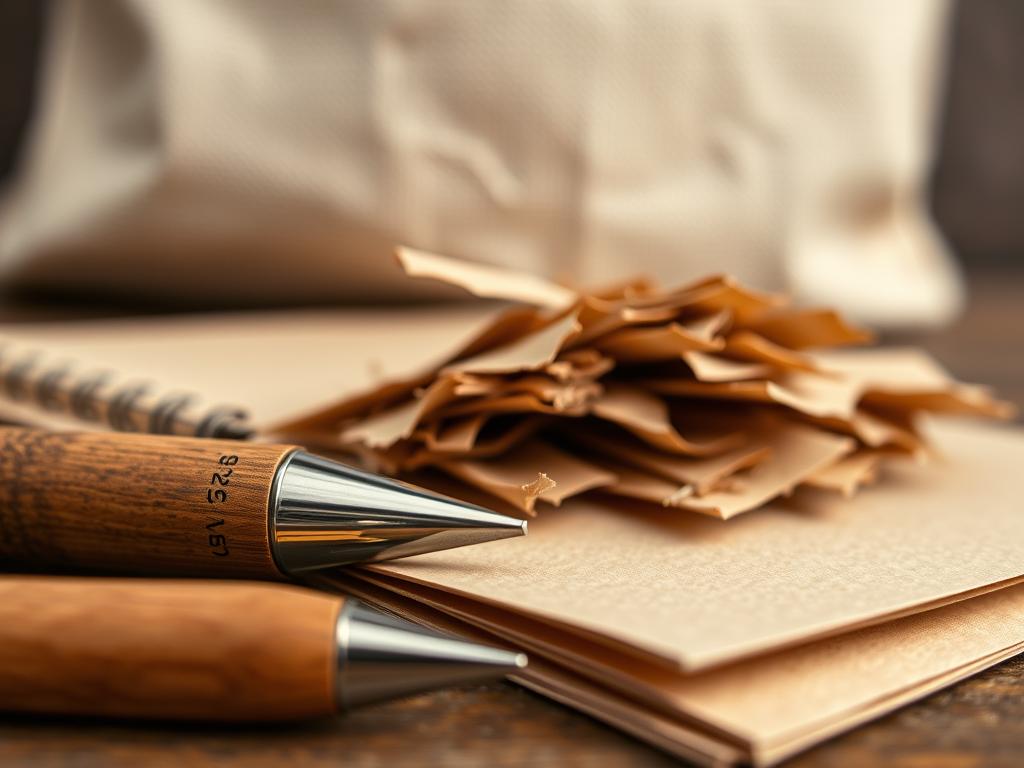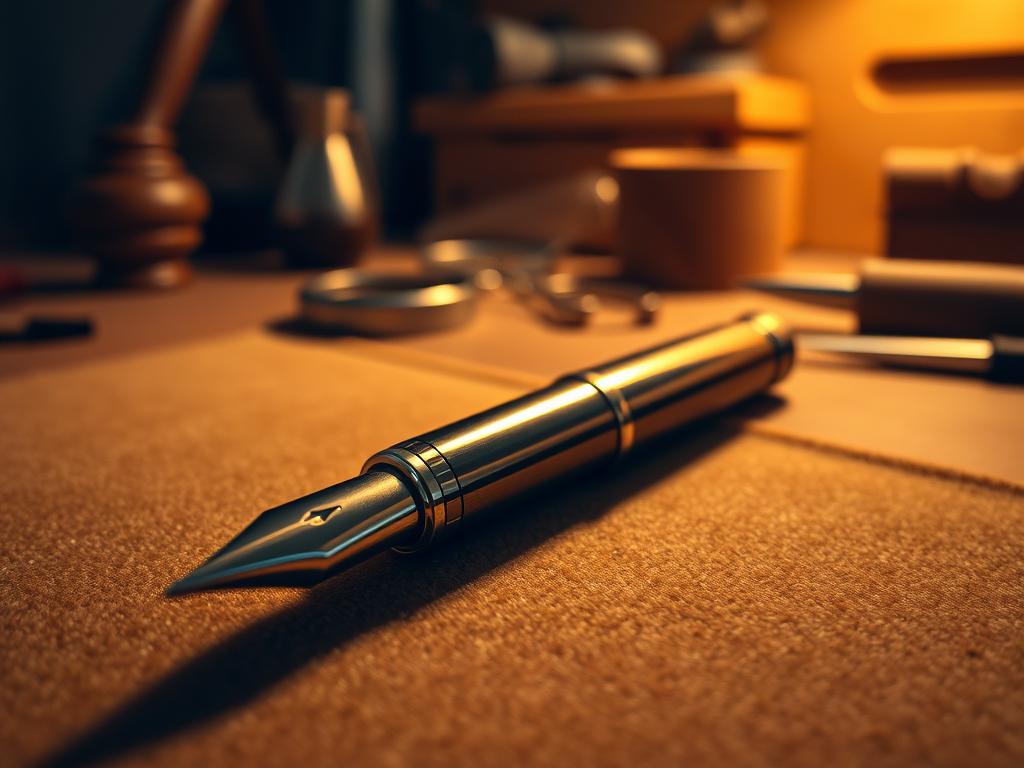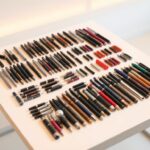In a world where every purchase tells a story, selecting a finely crafted writing instrument goes beyond mere functionality. Renowned brands like Montblanc, Caran d’Ache, and Namiki blend artistry with precision, creating pieces that reflect centuries of tradition. These items are not just tools for writing—they’re heirlooms that carry legacies of innovation and skill.
Modern shoppers increasingly value transparency in how products are made. Brands such as Graf von Faber-Castell and Pelikan prioritize eco-friendly materials, ensuring their creations honor both craftsmanship and the planet. This shift highlights a growing desire to support practices that protect artistic heritage while reducing environmental impact.
From the sleek lines of a Waterman fountain pen to the bold designs by Montegrappa, each piece tells a unique story. Collectors and professionals alike appreciate how these instruments elevate everyday tasks into moments of inspiration. The choice to invest in such items reflects a commitment to quality and responsibility.
Key Takeaways
- High-end writing instruments merge artistry with functionality, serving as lasting investments.
- Brands like Aurora and Tibaldi emphasize sustainable practices in their production processes.
- Consumers increasingly prioritize eco-conscious materials and ethical manufacturing.
- Heritage brands such as Parker and S.T. Dupont showcase decades of design evolution.
- Choosing thoughtfully crafted items supports both tradition and environmental stewardship.
Understanding Ethical Luxury Pen Buying
For collectors and enthusiasts, choosing a writing instrument is a blend of passion and principle. Brands like Caran d’Ache and Graf von Faber-Castell exemplify this balance, merging meticulous design with transparent material sourcing. Their creations—whether fountain pens or ballpoint pens—represent more than artistry; they reflect a commitment to integrity.
The Art of Purposeful Purchasing
High-end writing tools captivate through both form and function. A Montblanc fountain pen, for instance, isn’t just about smooth ink flow—it’s about sustainably harvested resins and conflict-free metals. Similarly, Aurora prioritizes recycled materials in their limited editions, proving elegance needn’t compromise responsibility.
Collectors often face choices: a refillable rollerball versus a disposable model, or a handcrafted pencil over mass-produced options. These decisions ripple beyond personal taste. They support brands that champion fair labor practices and eco-conscious innovation.
Values in Every Stroke
Why does this matter to collectors? A Pelikan fountain pen’s nib isn’t merely a writing tool—it’s a testament to generations of craftsmanship. Enthusiasts increasingly seek items that align with their worldview, whether through:
- Locally sourced wood in Montegrappa designs
- Carbon-neutral production at S.T. Dupont
- Longevity of refillable systems in Waterman models
This mindful approach transforms acquisitions into meaningful investments. It ensures each piece—whether a vibrant Namiki lacquer pen or a minimalist Tibaldi rollerball—carries a legacy worth passing down.
Evaluating Sustainability and Eco-Friendly Practices
Choosing a writing instrument now involves more than aesthetics—it’s a nod to planetary health. Forward-thinking brands are redefining craftsmanship by prioritizing materials that leave lighter footprints. From recycled metals to plant-based plastics, every component tells a story of innovation.

Eco-Friendly Materials and Manufacturing Processes
Leading companies like Caran d’Ache now use 85% recycled aluminum in their ballpoint designs, while others incorporate biodegradable corn resin for casings. Even paper packaging gets a green makeover—think seed-infused boxes that bloom when planted. These efforts cut waste without sacrificing durability or style.
Surprisingly, small details matter most. Erasers made from natural rubber replace synthetic blends, and ink bottle designs minimize plastic use. Such shifts prove sustainability isn’t just a trend—it’s reshaping how everyday tools are imagined.
Reducing Waste and Promoting Refillable Options
Single-use pens contribute to 1.6 billion pounds of annual waste. Brands combat this by offering refillable cartridge systems. For example, Lamy’s fountain pens work with interchangeable nibs and ink reservoirs, extending their lifespan for decades.
Even ballpoint enthusiasts can join the movement. Many models now accept standardized refills, reducing plastic disposal. This approach aligns with broader goals—like cutting carbon emissions by 30% through smarter materials choices.
For those exploring sustainable stationery options, the message is clear: every refill, recycled component, and redesigned bottle adds up. It’s not just about writing smoothly—it’s about writing responsibly.
Iconic Pen Brands and Their Craftsmanship
The artistry behind fine writing instruments has shaped cultures and inspired generations. From Swiss precision to Japanese lacquer mastery, these instruments bridge eras while defining modern elegance.
Spotlight on Renowned Brands
Montblanc’s Meisterstück line, born in 1924, remains a symbol of timeless design. Each nib undergoes 35 polishing steps—a ritual unchanged for a century. Meanwhile, Caran d’Ache’s fountain pens blend aerospace-grade aluminum with hand-tuned ink flow, like their flagship 1010 model. Namiki elevates tradition with maki-e techniques, where artisans spend months layering gold leaf and urushi lacquer.
These companies balance heritage with innovation. For example, Waterman’s Carene model features a seamless 18-karat gold nib shaped like a ship’s prow. Such details transform everyday tools into heirlooms.
Celebrating Heritage
Graf von Faber-Castell traces its roots to 1761, using sustainably harvested pearwood in their Guilloche series. S.T. Dupont, founded in 1872, crafts lacquer finishes so refined they’re compared to piano surfaces. Their ligne 2 lighters inspired pen designs with similar mechanical precision.
Pelikan’s Souverän series showcases their patented piston-filling system—a marvel since 1929. As one collector noted, “Owning one feels like holding a piece of engineering history.”
For those exploring this ultimate guide to luxury pen reviews, understanding these legacies deepens appreciation. Each stroke connects enthusiasts to centuries of ingenuity, proving that true craftsmanship never fades.
Design and Innovation in Writing Instruments
Modern writing instruments blend artistry with personal expression, turning everyday tools into cherished companions. The rise of bespoke craftsmanship allows users to infuse their personality into each piece, creating items that resonate deeply with their life stories.

Where Creativity Meets Functionality
Custom engravings transform standard designs into one-of-a-kind treasures. A name, date, or meaningful quote etched by hand elevates a writing instrument from practical to sentimental. Brands like Montblanc offer laser engraving services, while Caran d’Ache crafts limited editions featuring 18-karat gold accents.
Advances in technology enable ergonomic shapes that reduce hand fatigue. For example, Pelikan’s Souverän series uses weight distribution algorithms to balance comfort and precision. These innovations ensure tools adapt to users—not the other way around.
| Brand | Material Innovation | Unique Feature |
|---|---|---|
| Montblanc | Recycled titanium barrels | Customizable nib widths |
| Caran d’Ache | Biodegradable resin | Gold-plated engraving plates |
| Pelikan | Plant-based ink reservoirs | Interchangeable grip sections |
The journey from concept to finished product involves both machines and artisans. Automated systems carve precise components, while craftsmen polish nibs for buttery-smooth ink flow. This fusion ensures durability without sacrificing human touch.
“When I write with my engraved fountain pen, it feels like an extension of my soul.”
Limited editions amplify this emotional bond. Waterman’s “Parisian Nights” collection, adorned with starlight-inspired gold flecks, sold out in hours. Such pieces become heirlooms, passed down through generations as symbols of love and legacy.
By merging cutting-edge design with timeless craftsmanship, these instruments evolve into lifelong partners. They don’t just write words—they write life chapters.
Making Informed Ethical Choices in Luxury Pens
Smart shoppers know that every detail matters—from design to environmental impact. Before selecting a writing instrument, investigate its ingredients and production journey. For instance, some brands use recycled metals or plant-based plastics, reducing reliance on non-renewable resources.
- Transparency in material sourcing (e.g., conflict-free mineral policies)
- Carbon emissions during manufacturing and shipping
- Third-party certifications like Fair Trade or Forest Stewardship Council
Brands like Caran d’Ache now disclose the origins of their aluminum, while Montegrappa avoids toxic dyes in ink formulas. These choices directly influence a product’s ecological footprint. A pen crafted with responsibly mined brass or biodegradable resin often outperforms conventional options in long-term sustainability.
| Brand | Material Sourcing | Carbon Initiatives |
|---|---|---|
| Caran d’Ache | 85% recycled aluminum | Solar-powered factories |
| Montegrappa | Conflict-free gold accents | Sea freight shipping |
| Graf von Faber-Castell | FSC-certified wood | Reforestation partnerships |
One industry expert notes: “Transparency builds trust. Savvy buyers demand proof of ethical practices at every step.” This shift pushes business models toward circular systems—think refillable ink cartridges or take-back programs for worn components.
When comparing options, prioritize durability over disposability. A stainless steel nib or cellulose acetate barrel often outlasts cheaper plastics. These choices not only elevate writing experiences but also support businesses committed to positive change.
Conclusion
Every stroke with a thoughtfully crafted writing instrument carries weight beyond ink on paper. Mindful selection—whether for office tasks or coffee-fueled journaling—reflects values like responsibility and artistry. Brands such as Montblanc and Caran d’Ache prove that heritage craftsmanship can coexist with recycled metals and biodegradable resins.
These tools do more than form letters. They shape how we engage with ideas, turning routine tasks into moments of intention. A well-designed instrument becomes part of your day, whether signing documents or sketching plans over a morning brew.
Choosing items made with care supports traditions that honor both people and the planet. It’s about connecting to stories—like the 35-step nib polishing process or seed-infused packaging that blooms. Each decision, from refillable systems to conflict-free materials, writes a legacy.
Imagine a coffee-stained notebook filled with ideas born from a tool designed to last decades. That’s the power of aligning purchases with purpose. Explore brands that blend innovation with integrity, and let every mark you make echo your commitment to quality.
FAQ
How can someone identify eco-conscious writing instruments?
Look for brands that prioritize recycled metals, responsibly sourced resins, or biodegradable packaging. Companies like Pelikan and Graf von Faber Castell often highlight their sustainable practices, including refillable designs to minimize plastic waste.
What makes certain fountain pens more durable?
High-quality materials like gold nibs, precision-engineered feeds, and robust barrels crafted from celluloid or titanium contribute to longevity. Brands such as Namiki and Montblanc are celebrated for combining artistry with functional resilience.
Are refillable options available for premium ballpoint models?
Yes! Many brands, including Caran d’Ache and S.T. Dupont, offer replaceable ink cartridges or converters. This reduces single-use plastic consumption while maintaining a smooth writing experience.
Do limited editions support ethical craftsmanship?
Some brands partner with artisans or donate proceeds to environmental causes. For example, Pelikan’s “Earth” edition uses recycled materials, while Montblanc’s collaborations often fund literacy initiatives.
How do heritage brands balance tradition with modern ethics?
Companies like Graf von Faber Castell integrate renewable resources into classic designs, such as FSC-certified wood barrels. Others, like Pilot, invest in cleaner production technologies without compromising timeless aesthetics.
Can personalized engravings align with sustainable values?
Absolutely. Opting for hand-engraved details on durable materials extends a pen’s lifespan, reducing the need for replacements. Brands such as Waterman encourage customization while prioritizing long-term use over disposable trends.


